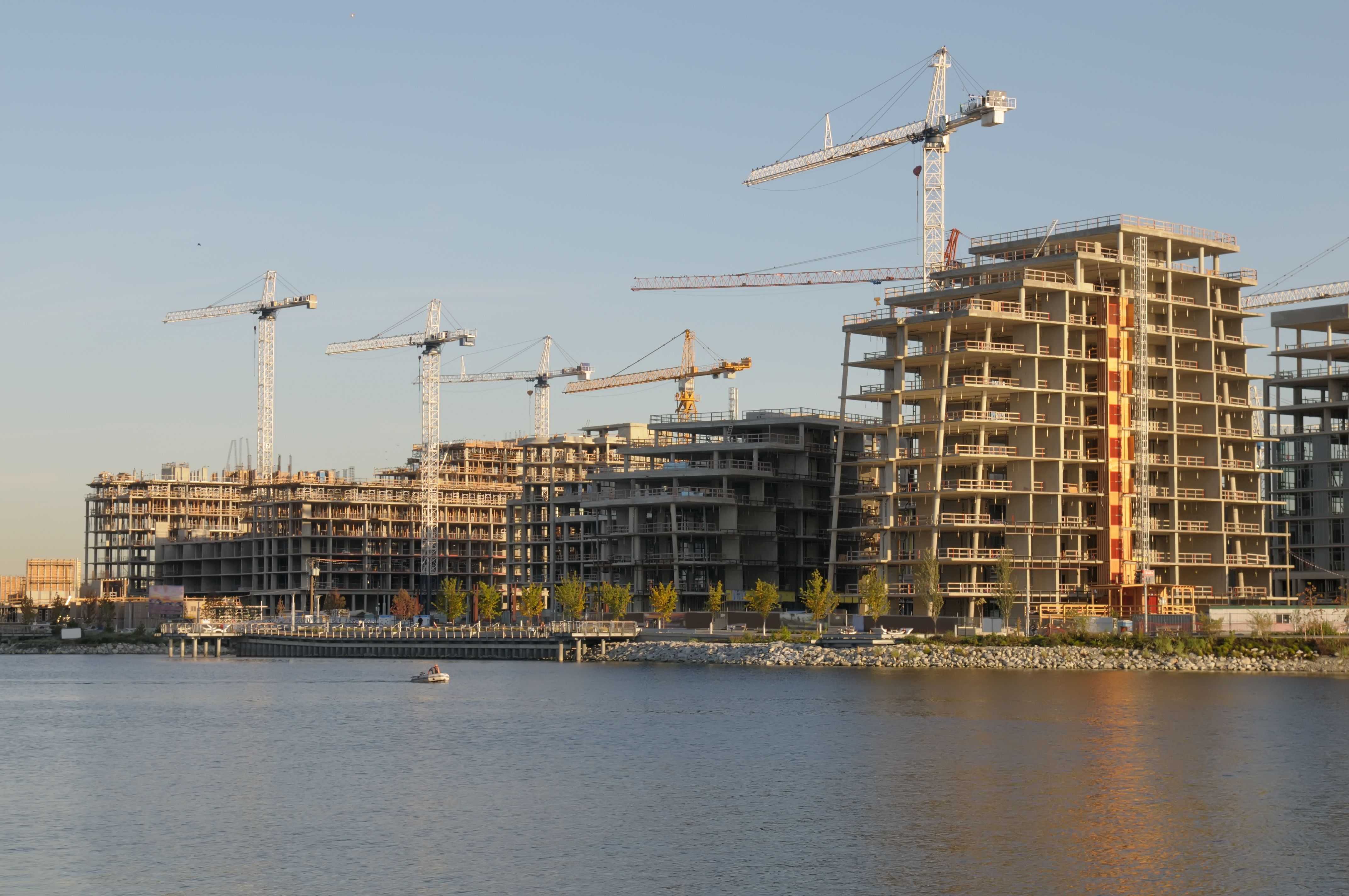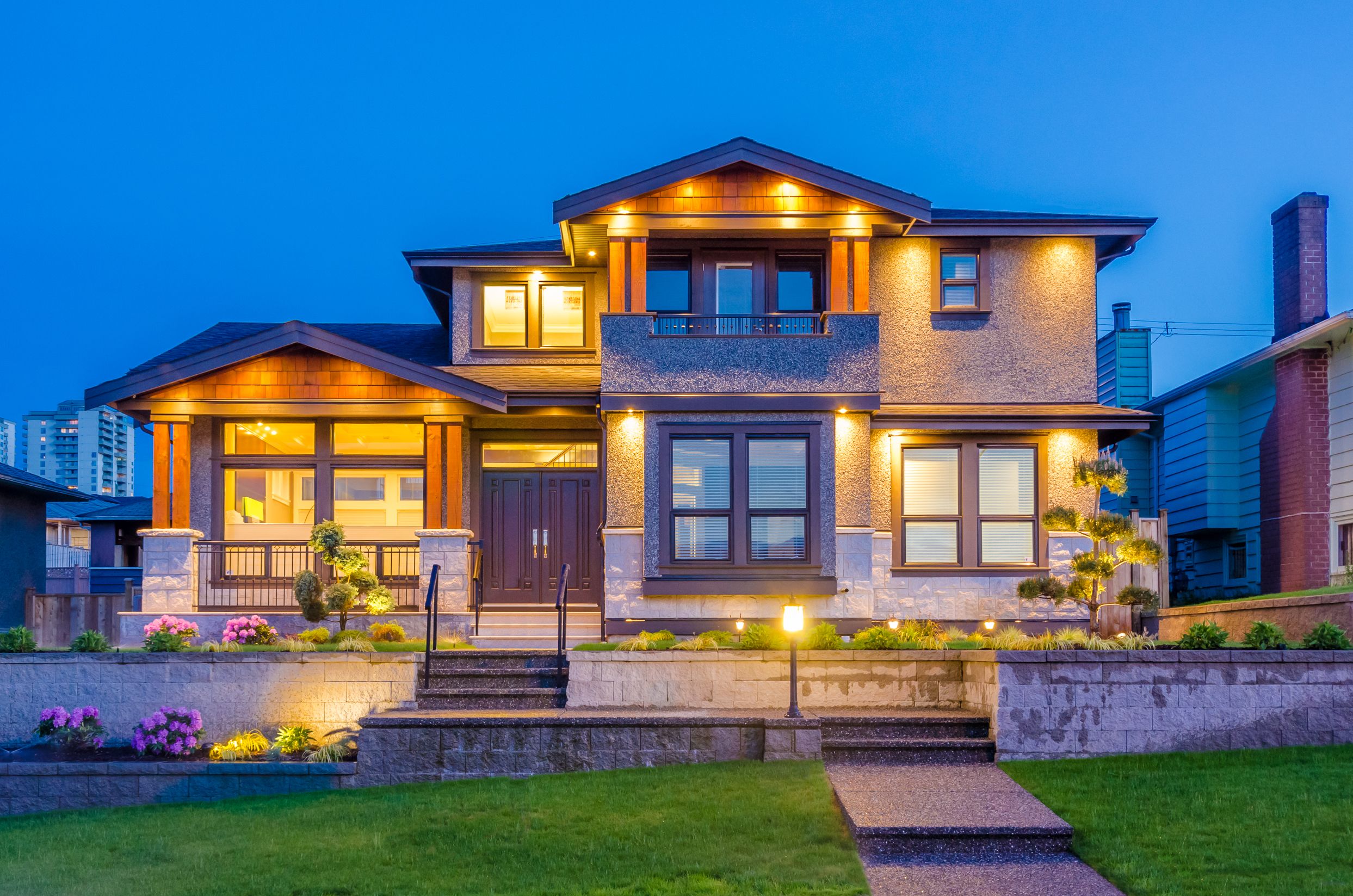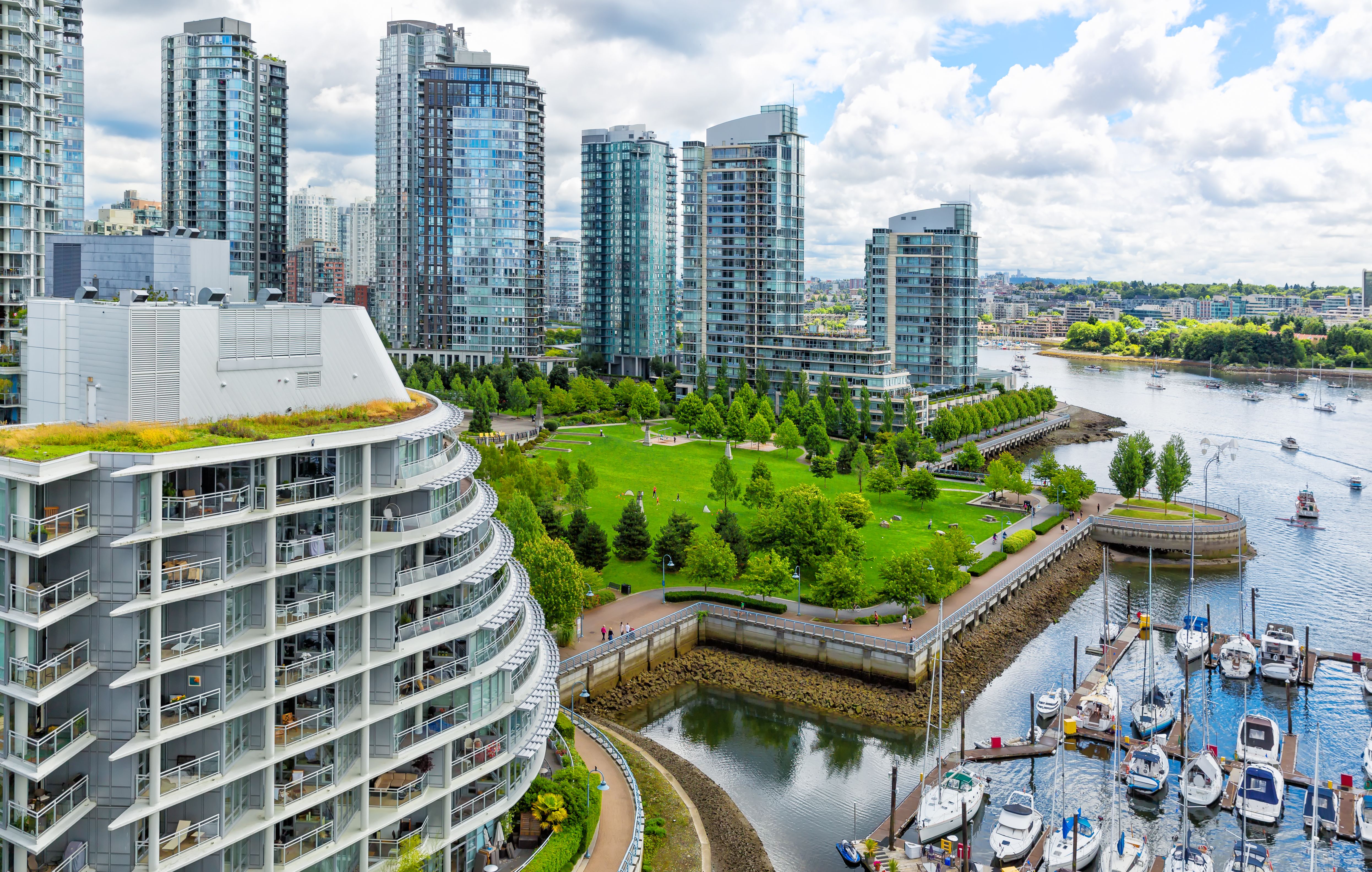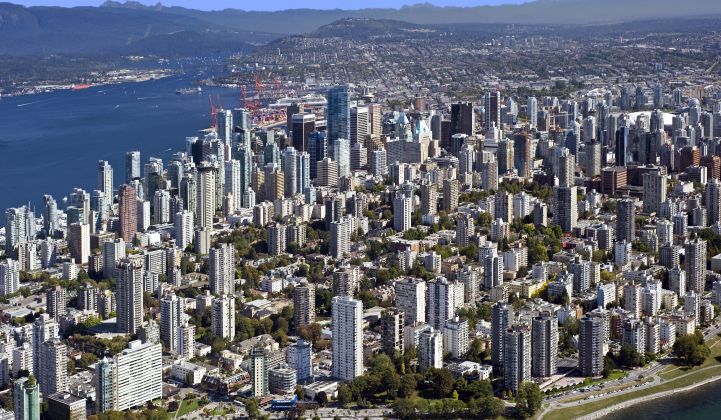The city of Vancouver, Canada sent a message to the green building sector this summer: Efficient isn’t good enough.
The dense coastal city will require zero emissions from any new buildings by 2030, based on a policy approved July 13. That means the building sector will have to roll up its collective sleeves and figure out how to heat, cool and power every new construction without any net greenhouse gas emissions. If that sounds daunting, the authors of the policy agree.
“This is a plan to fundamentally shift building practice in Vancouver in just under 10 years,” the document states.
The city government is leading by example here: all new city-owned and Vancouver Affordable Housing Agency projects must meet that high standard starting now. That’s key for testing out the building techniques that will later be codified into the building standards, said Sean Pander, the head of the city’s green buildings program. The next phase will require all rezoned residential developments to comply by 2025, with other new buildings following suit by 2030.
The city council will also fund a non-governmental Zero Emissions Building Centre of Excellence to help gather and spread the knowledge needed to complete zero-emission buildings.
The ambitious targets and deadlines place Vancouver at the forefront of the sustainable building movement, and their policy will likely serve as a model for more cities to come. What makes the plan revolutionary is that the city is ditching the standard long used by green building codes -- energy efficiency -- and instead benchmarking on absolute emissions.
Focusing on the emissions drives improvements to the thermal efficiency of the building, because heating sucks up the most fossil fuels in this temperate northern metropolis. The fixes to the insulation and sealing of the buildings, though, create benefits well beyond the climate change goals.
“It's a zero-emissions outcome from a policy perspective, but what it really is is fundamentally changing the quality of the construction,” Pander said. “It's really about, let's provide something that's way more comfortable and way healthier, and then let's let the market experience that and see what kind of value they put on it.”
Laying the groundwork
Vancouver bills itself as “the first major city in North America” to enact such a policy. This bold step didn’t come out of nowhere -- it followed on the heels of a dream-team lineup of sustainability initiatives.
The province of British Columbia has a carbon tax, so living in a zero-emissions house means no tax on the gas you might otherwise use to heat your home. Since 2004, Vancouver required civic buildings attain the LEED Gold efficiency standard, with rezoning developments similarly compelled starting in 2010.
The Winter Olympics that year spurred the development of a new athletes' village downtown, and Vancouver used that as a showcase for ultra-high-efficiency building techniques (more on that later). In 2011, it adopted a “Greenest City” goal for 2020, and last year it approved a strategy to achieve 100 percent renewable energy use by 2050.

The 2010 Olympic Village under construction. (Source: TallyHo Films / Shutterstock)
In this town, though, buildings generate a whopping 56 percent of emissions, which exceeds the contributions of transportation and waste combined. Any serious plan for sustainable urban design has to start there.
“If all buildings are to use only renewable energy by 2050, the sooner new buildings achieve near zero emissions, the fewer buildings there will be that require costly and challenging deep energy retrofits to achieve the target,” the plan says.
Hence the quick ramp-up: it’s a lot more expensive to clean up a building after the fact than it is to just build it right in the first place. That’s the same logic that drove San Francisco’s law requiring solar panels on all new developments.
Emissions, not energy
Building standards like ASHRAE and the LEED rating system have driven significant decreases in the waste and consumption of new buildings, but they share a structural impediment to ultimately eliminating greenhouse gas emissions: They don’t measure them. These standards track energy efficiency as expressed in the cost of powering a building. In many cases, spending less on heating and cooling will yield fewer greenhouse gases, but not always.
A family could heat their home with natural gas or electricity. In some markets, it will be cheaper to use gas, but, depending on the source of electricity, that could generate many more climate-altering emissions. The problem is compounded in Vancouver, where gas is cheap relative to electricity, but the electricity is almost entirely clean, thanks to ample local hydropower.
Policies designed to cut the energy bill for operating a structure, then, could drive people to switch from electric to gas, which would defeat the city’s climate goals. This prompted a realization for the city.
“If the outcome you want us to achieve is to reduce greenhouse gas emissions in a cost-effective way, then let's regulate on that instead of a proxy,” Pander said. “We largely use the existing tools; we just measure a different outcome. Don't report this, report that, and we'll use that metric as you comply or you don't comply.”

All about the envelope
Such an ambitious policy could rely on expensive technological fixes, but Pander said they chose a different tack: using available techniques to reduce the thermal needs of new buildings.
Part of this was practical.
“Most of our development is residential,” Pander noted. “What we have learned is that, in residential buildings, really complicated heating and ventilation and mechanical systems never operate like they were designed to.”
Complex mechanical systems can take a few years to optimize, he added, and they require expert supervision. That’s doable at government and commercial buildings, but impractical for most houses and condos.
The city planners went back to the drawing board in search of a way to minimize operational difficulty and expense, while still eliminating emissions. Those criteria led them to the model set by the passive house movement: if you put in more effort upfront to seal off what architects call the building envelope, you can drastically cut back on the main building energy sinks -- space heating, air intake and water heating.
“If we want greenhouse gas reductions, and we want them to be real reductions, and we want them to be reliable reductions…then you really have to focus on the building envelope,” Pander said. “Let's minimize the need for energy. That way, if the [heating] system isn't working to its optimal efficiency, well, great, it's only a quarter of the size because we've reduced the demand so much.”
Tightening up the envelope means installing high-performance windows that minimize heat transfer, but it also requires breaking up thermal bridges, which are building materials that transmit heat. In the case of Vancouver’s glass and concrete high rises, the concrete slab that extends from the floor to form a balcony also conducts heat. The new paradigm will require installing insulation to break that thermal flow.
High-rise buildings mechanically pull fresh air in from the roof to maintain healthy circulation inside, but the energy use there can be highly inefficient. The city government did a study on an existing building, Pander said, and found that, of the heat generated to get the replacement air to the right temperature, 15 percent circulated into common areas and only 8 percent actually penetrated residential units. That means three-quarters of all that energy used to heat the outside air wasn't serving its intended purpose.
A tight building seal, though, allows the architect to deploy heat recovery ventilators, which passively exchange heat between incoming and outgoing air. If it’s cold outside, the fresh air drawn into the building gets heated up by the stale air heading out. That leaves air that needs a fraction of the energy to get it to a comfortable temperature.
This level of precision exceeds that which is required by any building code so far. That means developers will need to create new approaches to construction, and find contractors who know how to do this kind of work. But for the additional complexity and cost up front, the long term payoff is that not only will it shrink a building’s carbon footprint, it’ll do that to the costs of heating and cooling, too.
Keeping it local
An increase in demand for high-end building components and the labor needed to install them will change the economic landscape of Vancouver’s building industry. The city contends it will do so by adding more jobs in the region that can’t be shipped overseas.
There’s some solid logic here. The more sophisticated detail work has to be done locally, of course. Beyond that, the types of materials the high-performance buildings will need, like windows and insulation, are not the kind of thing that developers like to import from far away.
“They're bulky, they're hard to ship, they're just-in-time delivery, so the market for those is regional,” Pander said. “Only under extreme duress would you import a window from Europe.”
That bodes better for the region than an approach that relied on fancy equipment imported from Europe or Asia. The local workforce will need to grow and adapt, though. That’s why the city wants to set up the center to exchange practical knowledge about actually doing this kind of work.

Best-laid plans
All the training centers in the world won’t help unless developers can still economically build under the new regime, and that has some of the building community worried.
Even if the tightly sealed buildings cost less to operate in the long term, the developer has to absorb the higher cost for the more sophisticated production upfront. Residents might be willing to pay more for a zero-emission building, but developers still have to compete in the marketplace; if the new costs run higher than the premium customers will pay, the developer will be stuck selling at a loss.
The Vancouver-based industry group Urban Development Institute supports the principle of the zero-emissions policy but wants to continue working closely with the city to ensure it doesn’t add costs in practice, said UDI President and CEO Anne McMullin.
“You've got to look at the costs and the benefits,” she said. “You can't just look at the benefits, because you don't get the benefits if it costs too much.”
It will be important to see what kind of efficiency savings materialize in practice, she noted. On the cost side, expenses could arise from adopting new materials and building up the supply chains for them. There are also questions about livability, like how the tougher standard will affect the amount of glass and natural lighting in a new high rise.
For the city’s builders, bitter memories linger from the 2010 Olympics, when the city’s desire for a sustainable showhorse left the Olympic Village developer saddled with debts that the property itself couldn’t support; the city had to step in and subsidize it for years after the games ended.
“It was costly and inefficient, and those are the kind of things you worry about happening,” McMullin said. “I don’t think the city wants to have another colossal mistake like the Olympic Village.”
Local developer Rob McDonald wrote in an email that he does not want to see building and operating costs spike like that.
“There is no question in my mind that the technology advances over the next 10 to 15 years will make all new buildings carbon-neutral or better,” wrote McDonald. “What Vancouver should not do is embed current high-cost and low-benefit programs that some planners think are ‘cool,’ when far better technological systems and protocols are just around the corner.”
The new insulation standards are already making construction more expensive, and that’s in a market where new construction is too expensive for most people, said architect Jonathan Katz, who specializes in custom single-family houses in the Vancouver area. He estimated that the additional costs could add 10 percent to 20 percent to the price of a project, while generating savings that will accrue over many years.
That said, Katz thinks zero-emissions building is the right way forward.
“It certainly makes it more challenging to design a house, and to some extent, design will be driven by the science of zero-emission buildings, which will produce a more contemporary type building (certainly my preference), and move away from the character-type houses that are synonymous with Vancouver’s single-family housing market,” he wrote in an email. “I think that Vancouver will meet and exceed the challenge and ultimately produce better and more interesting and exciting buildings.”
Green city vanguard
The success of Vancouver’s effort will be decided on the ground over the next 15 years, and lessons from that experience will guide any other cities that attempt such a feat. Certain factors may limit the transferability of the program, though.
For one thing, Vancouver is blessed with super clean electricity thanks to its abundant hydropower resources. That simplifies emissions reductions through electrification, but that won’t be the case everywhere. Locales with high amounts of coal or natural gas in their electricity portfolio will have to figure out workarounds for that, or overhaul their power plants as a precursor to clean building plans.
Vancouver also has a strong history of demanding public investments from developers as a barrier to entry into the market.
“When you come here, the waterfront is all public, there's no private waterfront, and most of it in the high density areas is of very, very high quality because we didn't have to pay for it,” Pander said. “The people making money through development are paying to have these beautiful neighborhoods.”
That principle exists in the U.S., where many jurisdictions require investment in affordable housing or public spaces in the course of redeveloping choice urban lots, but American developers generally expect to keep more of their profits than their counterparts in Vancouver.
Then there’s the climate. Net zero is easier to achieve in northern regions, like Canada or Europe, where you have a greater need for heating than cooling, said Mark MacCracken, former chair of the board of directors at the U.S. Green Building Council, which oversees LEED certification. People and appliances generate heat, which passive houses harness to stay warm.
“Waste heat is helping you in a net-zero building in an area where you need heating,” said MacCracken, who also runs Calmac, a thermal energy storage company. “If you go to Texas, that heat is waste.”
That is, it takes more energy to expel the heat, increasing the load that must be met without generating emissions. This doesn’t make zero emissions impossible in warm climates, just more challenging.
Zero-emissions building will spread slowly, with initial adoption in the most favorable locations laying the groundwork for other jurisdictions to follow suit.
“You need stakes in the ground, and you need people doing it,” MacCracken said. “The more people are doing it, the easier it’s going to get.”



